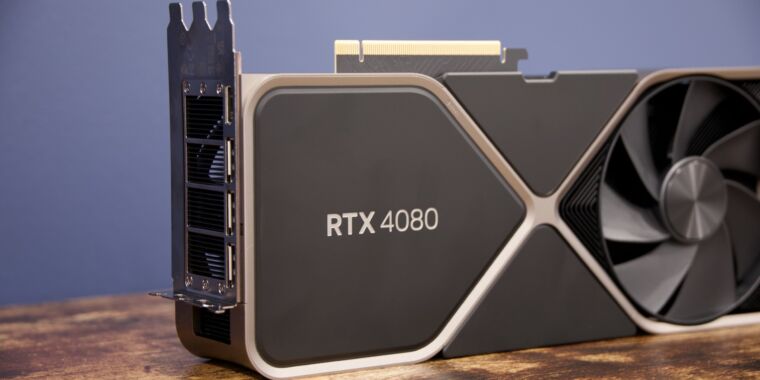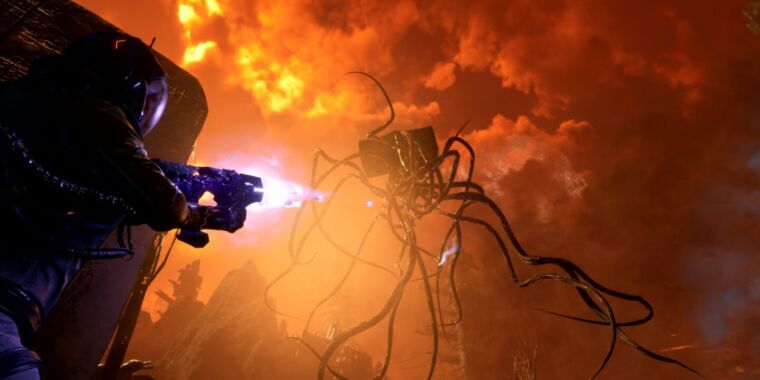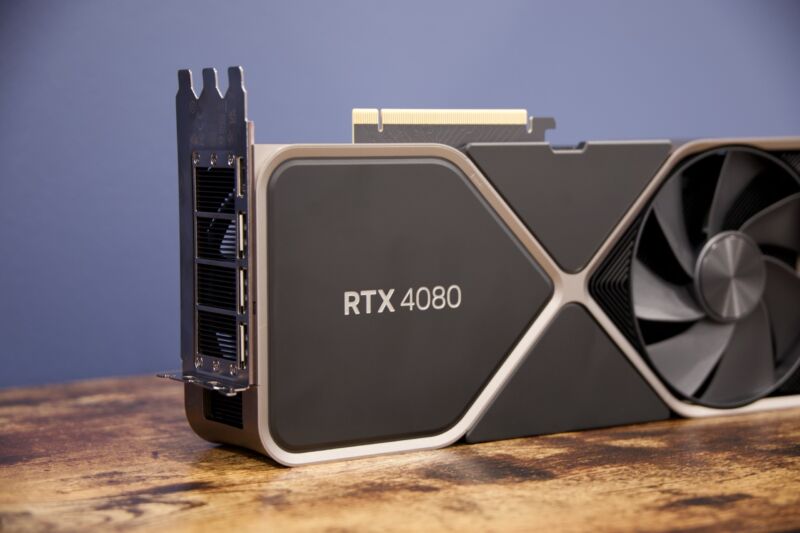
Andrew Cunningham
Very little about Nvidia’s GeForce RTX 4080 is surprising—especially now that the confusing, scrapped 12GB version is being renamed. In pretty much all of our performance tests, it slots in right where you’d expect it to, comfortably ahead of the RTX 3080 Ti but trailing the $1,500 RTX 4090 by enough to justify the $300 price gap. It’s usually capable of hitting or exceeding 60 fps at 4K, and games with DLSS support (or some other kind of upscaling tech) can buy you a solid frame rate increase. And its power requirements aren’t as stratospheric as the 4090’s, either, so most people with an existing xx70 or xx80-class gaming PC shouldn’t need to switch out their power supply.
The major downsides, as of this writing? As a group, the cards are often just as huge and cumbersome as the RTX 4090 (the Founders Edition is identical, and partner cards largely follow suit). The $1,200 starting price is historically high—the 3080 Ti launched with a GPU-shortage-inflated MSRP of $1,119 GPU, but the 2080 and 3080 were both a mere $699 at launch. And even if you are willing to pay that price—surprise, surprise—it’s basically impossible to find in any form anywhere close to MSRP.
Which means, hooray: another GPU review that exists mostly as a theoretical exercise! If you could buy this GPU for the amount of money it’s supposed to cost, and if its competitors were also available for what they were supposed to cost, then here’s how it would stack up. That world doesn’t exist right now, but if you’re reading this in a few months, circumstances may have changed. In the meantime, imagine with us, won’t you?
About the size—and that power connector
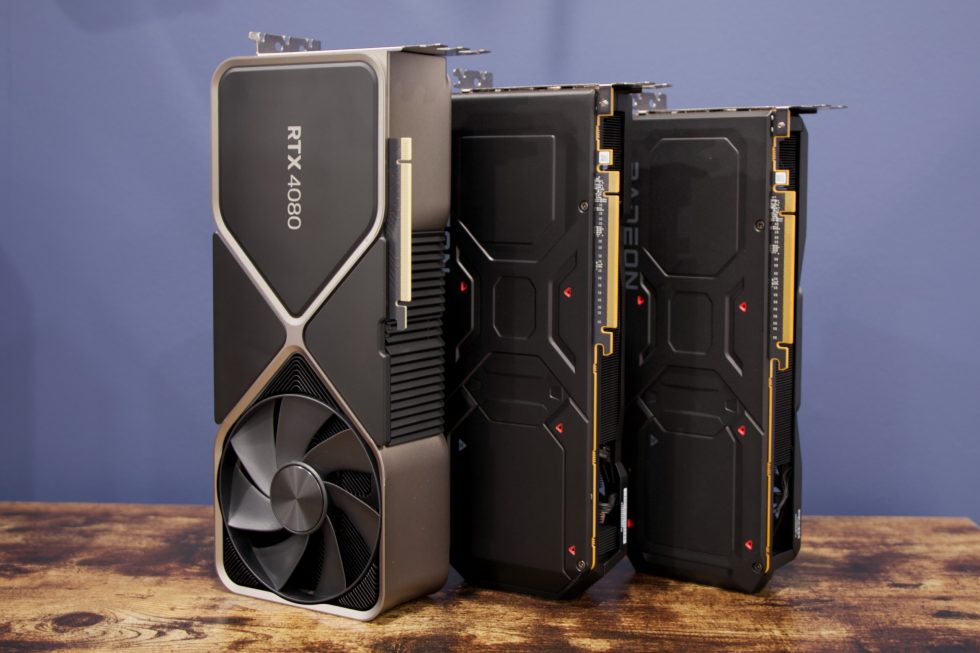
Andrew Cunningham
The 4080’s physical dimensions are 12.3×5.35×2.13 inches, same as the 4090, and our 4090 review has several images comparing it to various objects so you can get an idea of just how large that is. It’s a GPU that’s roughly the same size as an entire Xbox Series S.
That does have ramifications for upgraders, particularly those using more space-efficient cases. Plenty of gaming-focused mini ITX cases won’t fit a 4090 or 4080 at all, and although the case I use for my testbed fits full-size ATX motherboards (a Lian Li O11 Air Mini), I can’t put the side panel back on with the card installed because the included power adapter sticks out too much. Once you factor in the front-mounted radiator and tubing for the CPU cooler, it’s a tight fit, and it’s something to keep in mind when upgrading an existing PC rather than building a new PC specifically designed to accommodate the card.
On the subject of that power adapter, the 4080 still uses a 12VHPWR power connector, the same as the RTX 4090—the adapter just wants three 8-pin power adapters plugged into it instead of four. This connector has been the subject of some controversy because of overheating and melting issues that some users have experienced. The bad news is that the 4080’s adapter is likely susceptible to the same issue, but the good news is that, in most cases, Nvidia and third-party testers have found that this overheating is created when the cables aren’t quite plugged in all the way, something most people should be able to avoid with a little care.
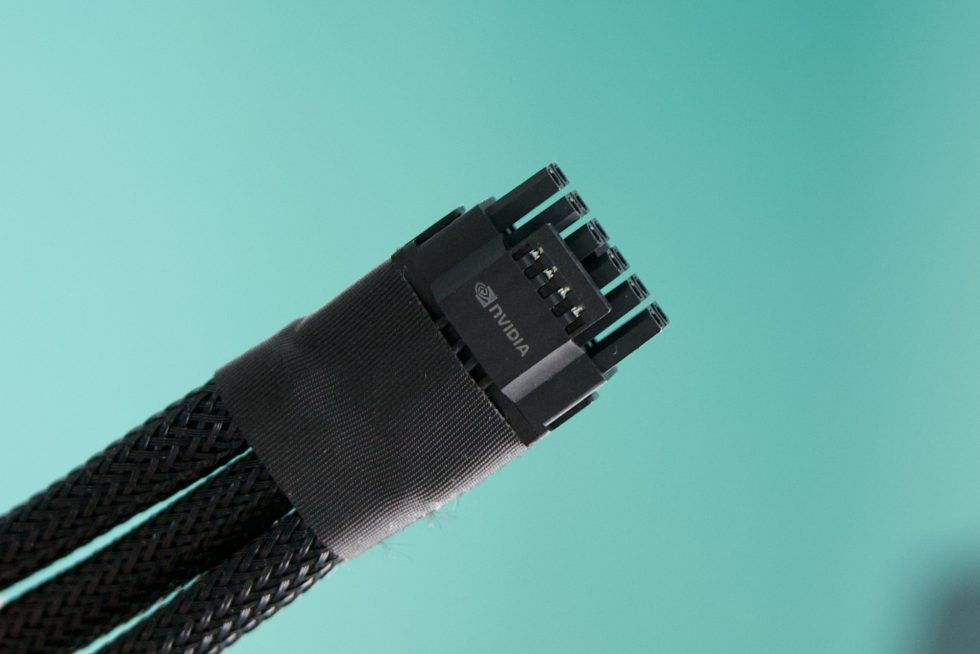
Andrew Cunningham
The best way to check the firmness of your connection is to give the adapter a couple of firm tugs to make sure it doesn’t come unseated—it may pull back a millimeter or two while you’re doing this but not enough to cause the heat problems that some people have been seeing. Push the connector back down after you’ve done this and try to be careful not to pull the cables around too much or bend them at an extreme angle.
In terms of power draw, the Founders Edition of the RTX 4080 is rated at around 320 W, the same as the last-generation RTX 3080 and lower than the 4090 (450 W) and the 3080 Ti (350 W). In practice, we found it to be even better behaved, drawing an average of just under 300 W during a Hitman 3 benchmark run and averaging a relatively cool 59.8 degrees Celsius. The hulking heatsink and fans are overkill, but they do their job. Nvidia recommends a 750 W power supply, the same as the RTX 3080 and 3080 Ti, and you might be able to get away with less if you’ve paired it with a modest 6- or 8-core CPU.

